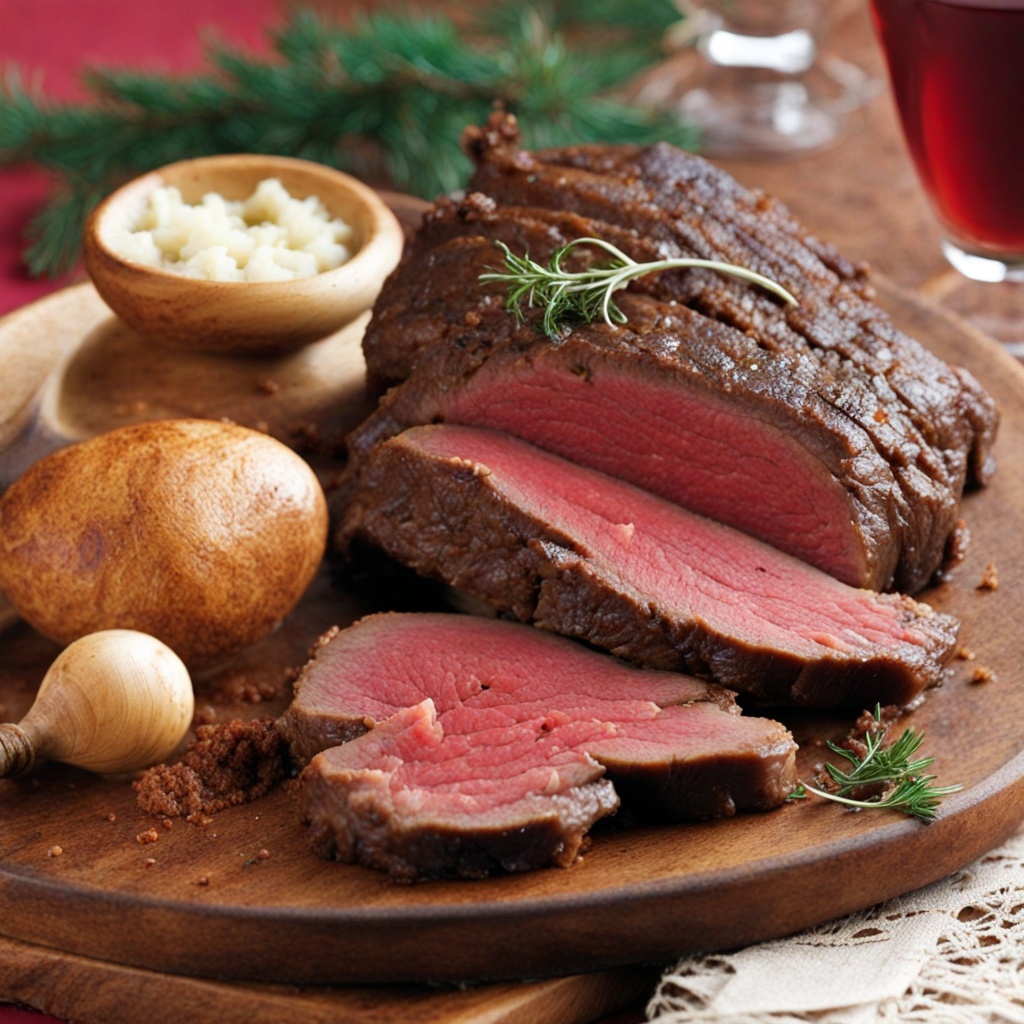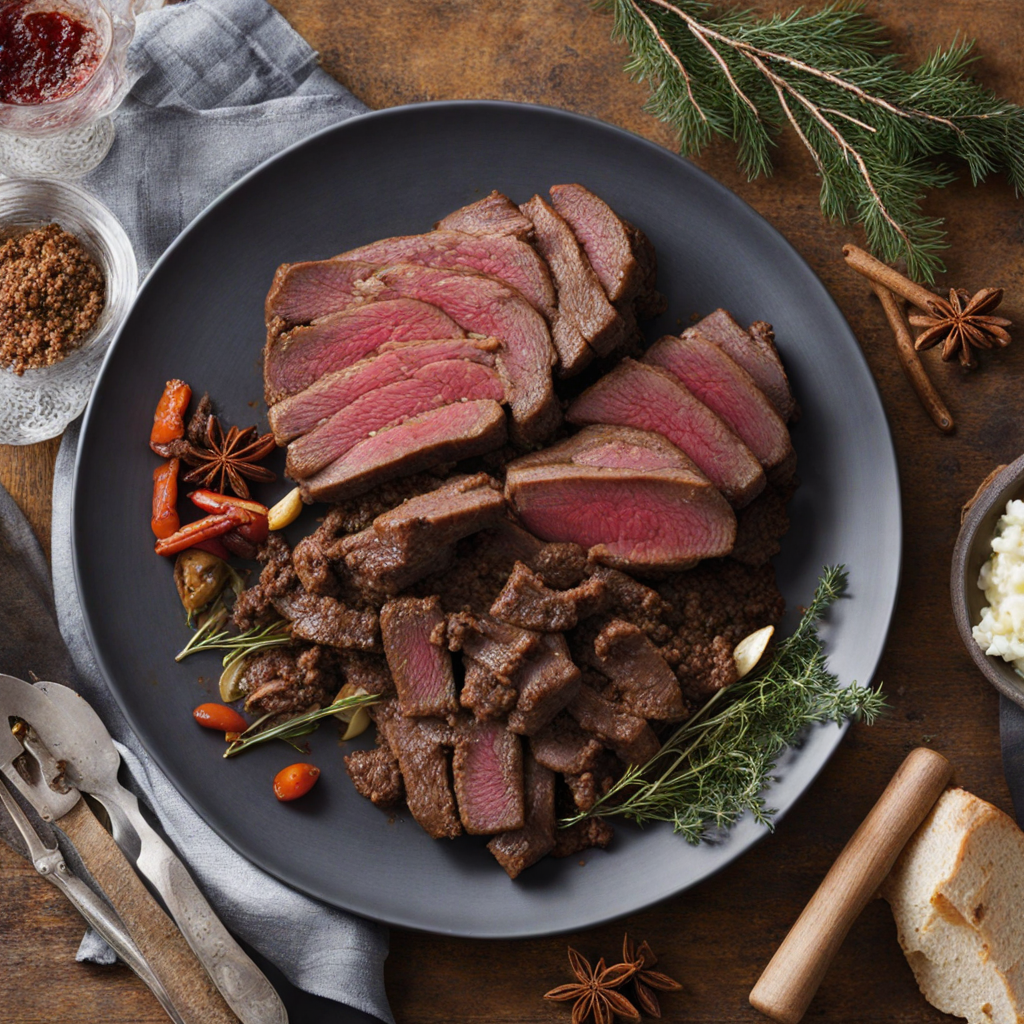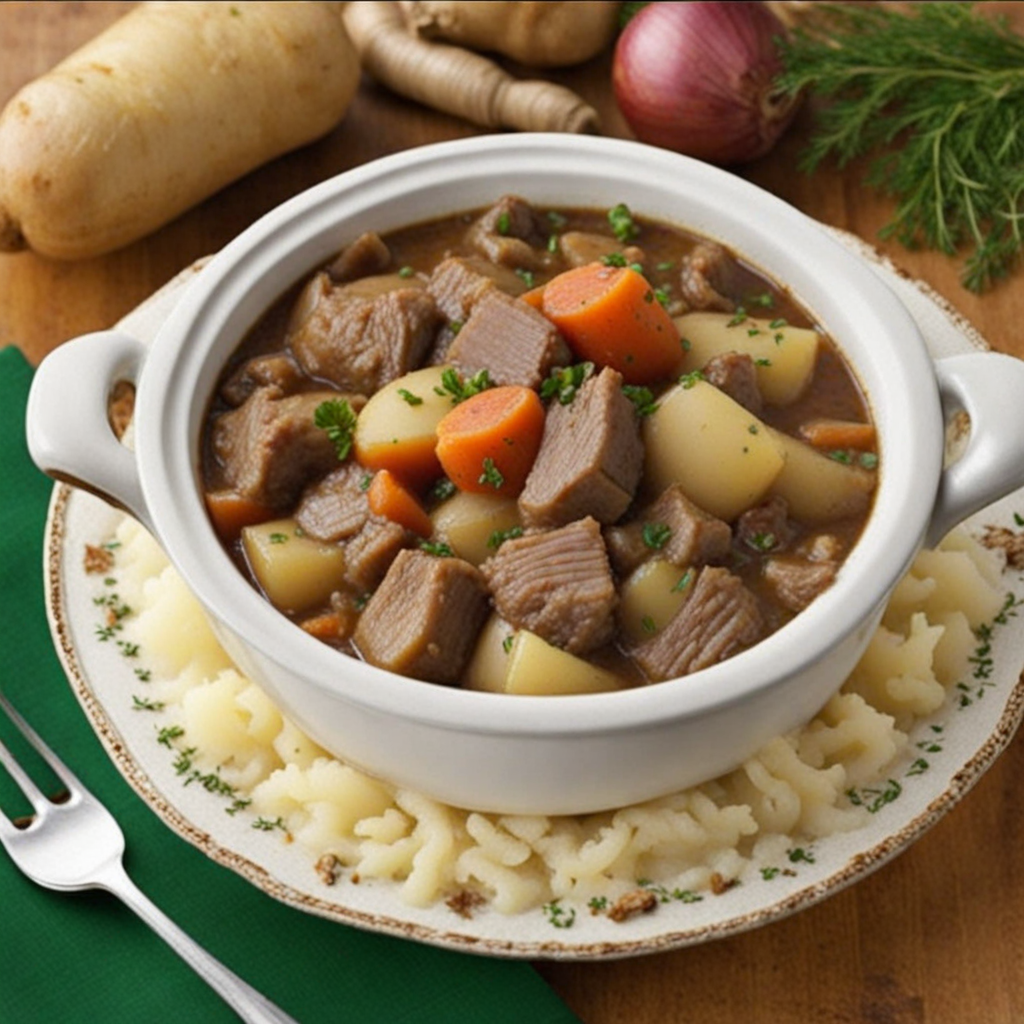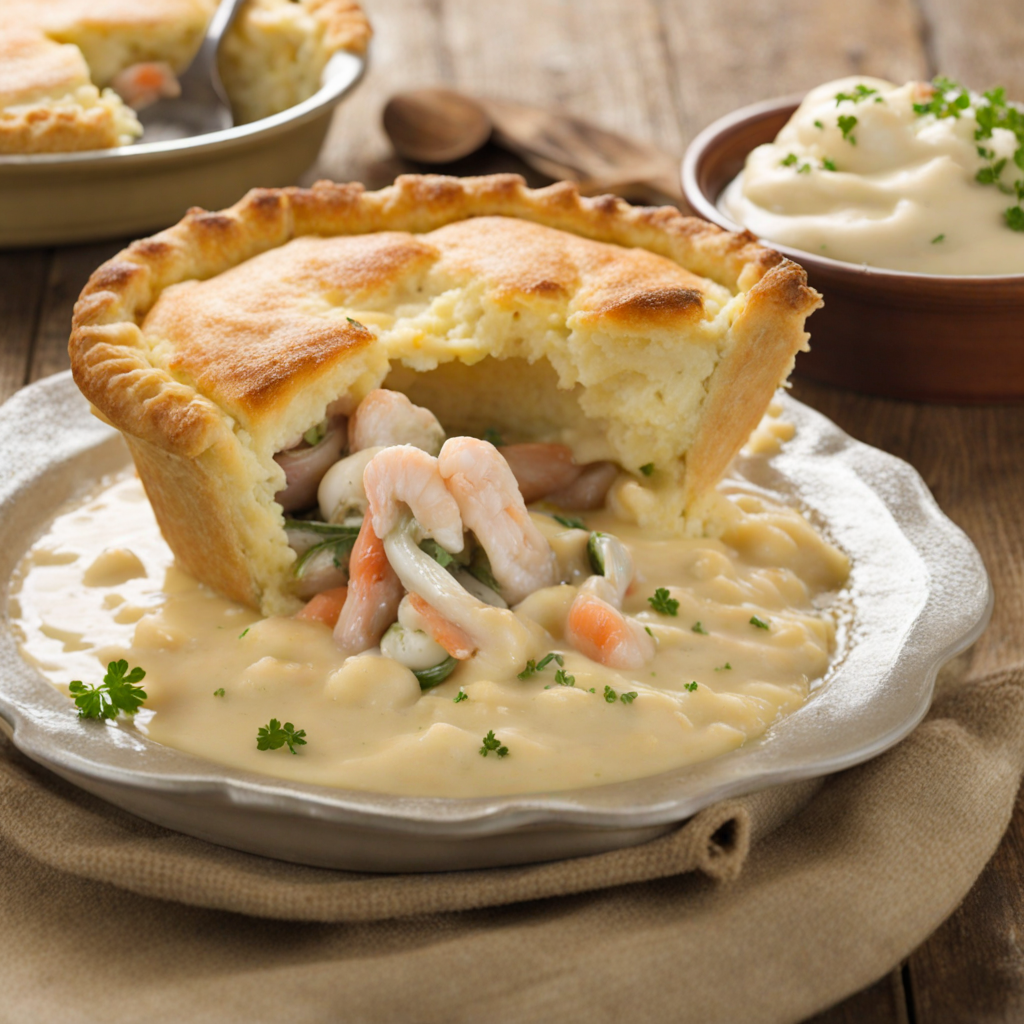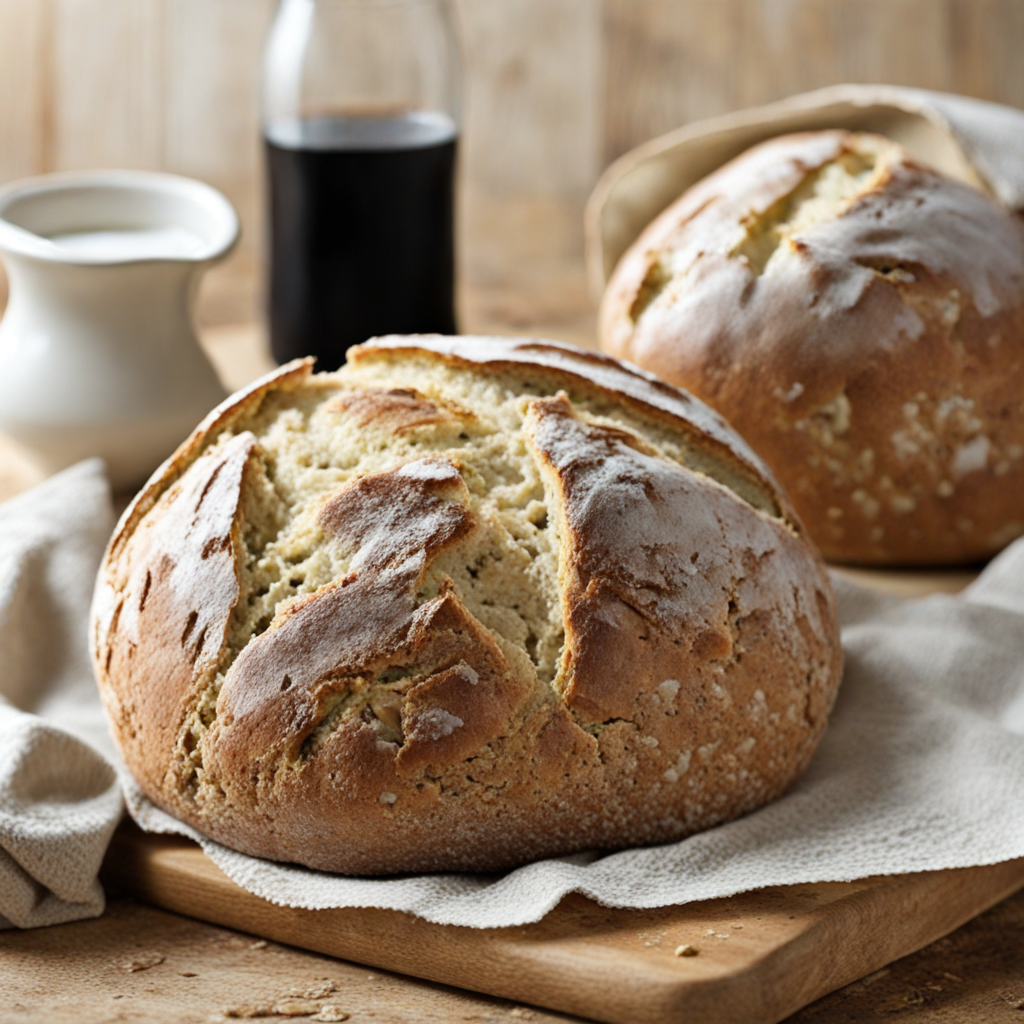Spiced Beef
Spiced Beef is a traditional Irish dish that showcases the country's rich culinary heritage. This delicacy consists of beef brisket that is cured with a blend of spices, often including black pepper, coriander, and allspice, which give it a distinctive flavor profile. The curing process typically involves marinating the beef for several days, allowing the spices to penetrate the meat deeply, enhancing its natural taste while tenderizing it. Once cured, the beef is usually boiled or steamed, resulting in a succulent and flavorful dish that is both comforting and hearty. When prepared correctly, Spiced Beef has a unique combination of savory and aromatic qualities that make it stand out. The spices create a warm, inviting aroma that fills the kitchen, and the tender meat melts in your mouth with every bite. Traditionally served thinly sliced, it can be enjoyed on its own, as part of a sandwich, or accompanied by various side dishes such as colcannon or roasted root vegetables. The dish is often enjoyed during festive occasions, making it a staple at family gatherings and celebrations. Spiced Beef is not just a meal; it's an experience that reflects the warmth and hospitality of Irish culture. The flavors evoke a sense of nostalgia and comfort, making it a beloved dish among locals and visitors alike. Pairing it with a good pint of Irish stout or a glass of whiskey enhances the flavors, creating a delightful culinary experience that invites you to savor the rich traditions of Irish cuisine.
How It Became This Dish
Origin of Mairteoil Spíosraithe Mairteoil Spíosraithe, which translates to "spiced beef" in English, is a traditional Irish dish with deep roots in the culinary landscape of Ireland. Its origin can be traced back to the time when cattle were a vital part of rural life in Ireland, both as a source of labor and as a primary food source. The practice of curing and spicing beef likely emerged as a means to preserve meat before the advent of refrigeration, allowing communities to make the most of their livestock during times of plenty. The earliest references to spiced beef in Irish literature date back to the 17th century, when the dish was often prepared for special occasions and gatherings. The use of various spices to flavor the meat reflects the influence of trade, as spices were not native to Ireland but were imported through trade routes connecting Europe, the Middle East, and Asia. This blending of local and exotic flavors created a unique culinary identity that would evolve over the centuries. Cultural Significance Mairteoil Spíosraithe holds a special place in Irish culture, often associated with feasts and celebrations. In the 19th century, it became particularly popular during the Christmas season, where it was served alongside other festive dishes. Families would prepare large quantities to share with neighbors and friends, fostering a sense of community and togetherness during the holidays. The dish also has historical connotations, as it was commonly associated with the wealthy and the gentry. Landowners would often host gatherings where Mairteoil Spíosraithe was served, symbolizing hospitality and abundance. This association with affluence has made the dish a point of pride in Irish culinary tradition, representing not only the art of preservation but also cultural heritage. Ingredients and Preparation The preparation of Mairteoil Spíosraithe involves a careful selection of spices, which typically include black pepper, cloves, and sometimes allspice. The meat is usually a cut from the beef, such as brisket or silverside, which is cured in a mixture of salt and sugar before being coated in the spice blend. The curing process can take several days, allowing the flavors to penetrate the meat thoroughly. Once cured, the beef is often boiled or braised, resulting in a tender and flavorful dish. Traditionally, it would be served with a side of cabbage or potatoes, showcasing the simplicity and heartiness of Irish cuisine. With its robust flavor profile, Mairteoil Spíosraithe is often enjoyed as a main dish during family gatherings or festive occasions, reinforcing its role in communal dining experiences. Evolution Over Time Throughout the 20th century, Mairteoil Spíosraithe began to see variations in its preparation and presentation. As culinary trends shifted and globalization increased, traditional recipes were adapted to suit modern tastes. Ingredients such as garlic, thyme, and even whiskey started to appear in some adaptations, showcasing the evolving nature of Irish cuisine while still retaining the essence of the original dish. The revival of interest in traditional Irish foods in recent decades has also contributed to the resurgence of Mairteoil Spíosraithe. Chefs and home cooks alike have sought to preserve and celebrate their culinary heritage by returning to age-old recipes and techniques. This revival is part of a broader movement to appreciate locally sourced ingredients and traditional methods in cooking, aligning with contemporary values around sustainability and authenticity. Regional Variations While Mairteoil Spíosraithe is widely recognized throughout Ireland, regional variations exist that reflect local culinary practices and available ingredients. In some parts of Munster, for instance, the spiced beef may be smoked, adding an additional layer of flavor that enhances the dish's complexity. In contrast, in the northern regions, it may be prepared with a slightly different spice mix, incorporating local herbs and even different cuts of beef. These regional differences not only highlight the adaptability of the dish but also reinforce the diversity found within Irish cuisine. Each variation tells a story of local traditions, preferences, and the communal nature of food preparation and consumption, maintaining the spirit of Mairteoil Spíosraithe as a dish that brings people together. Modern Interpretation In recent years, Mairteoil Spíosraithe has found a place in contemporary Irish gastronomy, often featured on menus in restaurants dedicated to traditional Irish cuisine. Chefs have embraced the dish, offering it in innovative ways that respect its origins while appealing to modern palates. This might include serving it as a gourmet sandwich, paired with artisanal breads, or incorporating it into gourmet salads and charcuterie boards. The dish has also gained recognition beyond Ireland's borders, as food enthusiasts and chefs worldwide explore the rich tapestry of Irish culinary history. Food festivals and cultural events often spotlight Mairteoil Spíosraithe, allowing people from different backgrounds to appreciate its unique flavors and significance. Conclusion Mairteoil Spíosraithe stands as a testament to Ireland's rich culinary heritage, embodying the spirit of community, tradition, and adaptation. Its journey from a practical means of preserving beef to a beloved dish enjoyed in homes and restaurants alike illustrates the dynamic nature of food culture. As it continues to evolve, Mairteoil Spíosraithe not only preserves the flavors of the past but also connects generations, celebrating the essence of Irish identity through food. In conclusion, the enduring appeal of Mairteoil Spíosraithe serves as a reminder of the importance of food in cultural expression and community bonding. As it finds its place in both traditional and modern culinary contexts, it invites everyone to partake in a delicious piece of Ireland’s history, one spiced beef dish at a time.
You may like
Discover local flavors from Ireland


